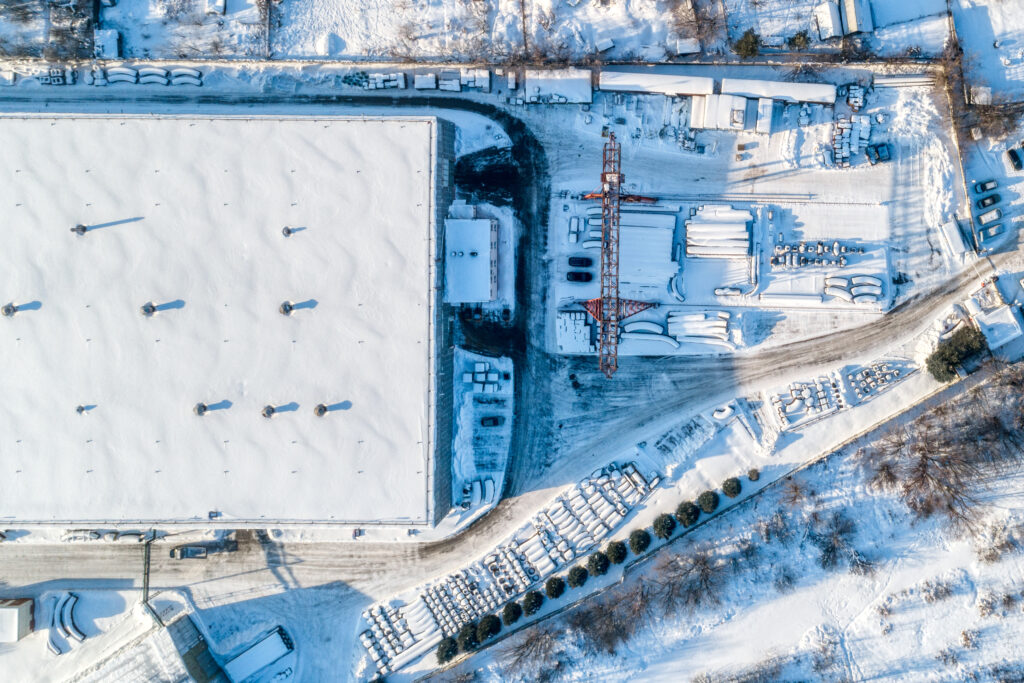
As winter blankets the landscape with snow and plunges temperatures to freezing levels, commercial roofs face a barrage of challenges that can impact their integrity. In this blog post, we’ll explore the specific ways in which winter weather conditions affect commercial roofing and discuss essential strategies to safeguard your investment during the cold months.
1. Heavy Snow Accumulation
One of the primary concerns at higher elevations in New Mexico during winter is the accumulation of heavy snow. Winter winds can also create snowdrifts on commercial roofs, leading to uneven snow loads. The added weight and unbalanced distribution of snow can strain the roof structure and increase the risk of damage. Regular snow removal, especially after significant snowfall, can help prevent overloading and ensure the safety and longevity of the roof. Personnel tasked with removing snow and ice should be properly tied off for their safety, and care is needed to prevent damage to the roofing material during removal efforts.
2. Ice Dams and Freezing Conditions
Freezing temperatures can create ice dams at pitched roofs, where melted snow refreezes at the roof’s edge, obstructing proper drainage. These dams can lead to water pooling, compromising the roofing materials and causing leaks. Proper insulation, ventilation, and timely removal of ice dams are critical to preventing winter-related water damage. Well designed snow retention and snow melt systems can also be utilized to protect the building and occupants from unexpected avalanches of built-up snow and ice.
Low slope roof have similar issues with freezing conditions and ice buildup. Roof drains and outlet scuppers (or ‘canales’) can freeze and lead to drainage backup. If conditions warrant, ice melting systems may help.
3. Thermal Cycling and Material Stress
Winter brings about extreme temperature fluctuations, subjecting roofing materials to thermal cycling. The repeated expansion and contraction can stress the materials, leading to cracks, compromised seams, and overall wear. Regular inspections during and after winter help identify vulnerable areas that require attention and maintenance.
4. Condensation and Insulation Challenges
Cold temperatures outside means that heat gets turned on inside the building, which can lead to condensation issues as warm air moves through poorly insulated roofs. Condensation can accelerate the deterioration of roofing materials and compromise their effectiveness. Ensuring proper insulation and ventilation is crucial to maintaining a dry and efficient roofing system.
5. Emergency Preparedness
Winter storms can bring unexpected challenges, from heavy snowfall to ice storms. Having an emergency response plan in place, including regular communication with roofing contractors and a protocol for swift inspections after severe weather events, ensures that any issues are addressed promptly, minimizing potential damage.
Conclusion
Winter weather conditions present unique challenges for commercial roofing, demanding proactive measures to ensure the longevity and resilience of the roofing system. Regular inspections, strategic snow removal, and a commitment to addressing issues promptly are key elements of a comprehensive winter maintenance strategy. By taking these steps, commercial property owners can navigate the winter months with confidence, knowing that their roofs are prepared to weather the storm.
Schedule a roof inspection with one of our skilled professionals today!
